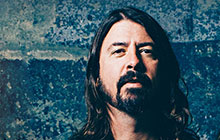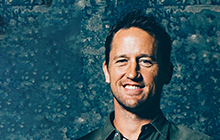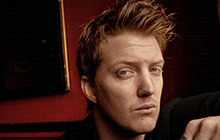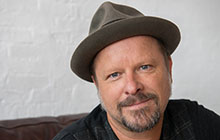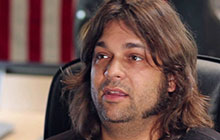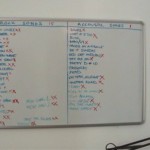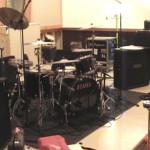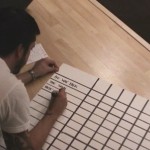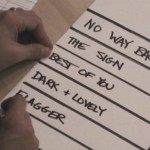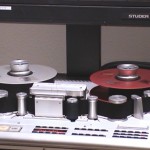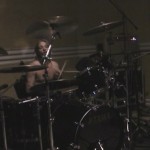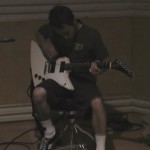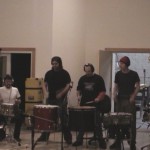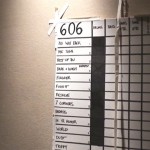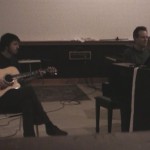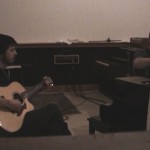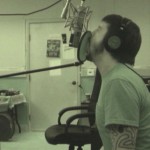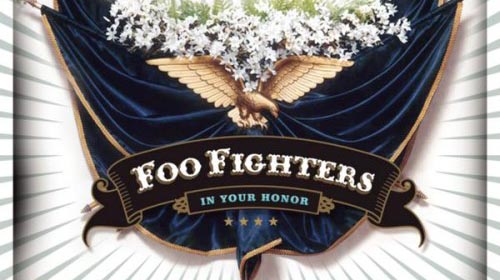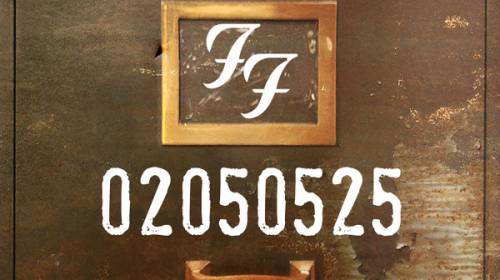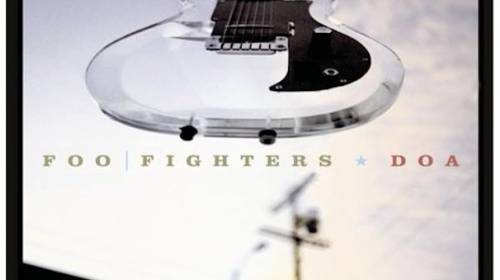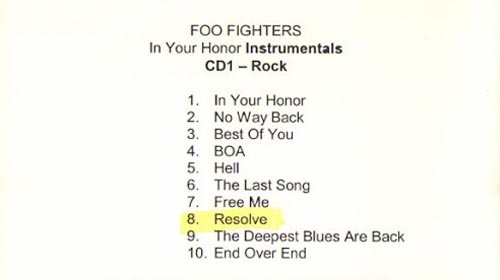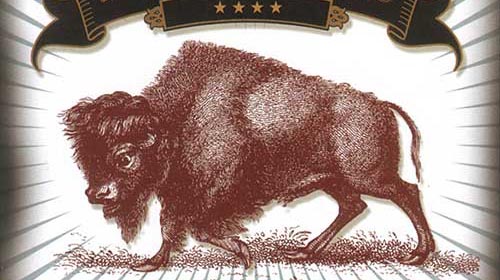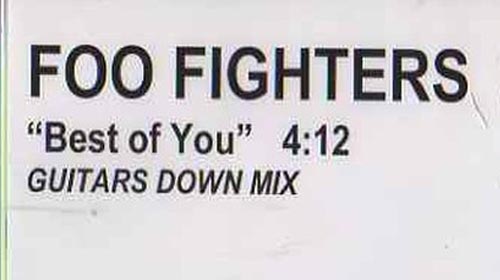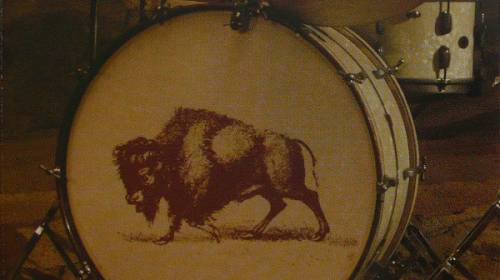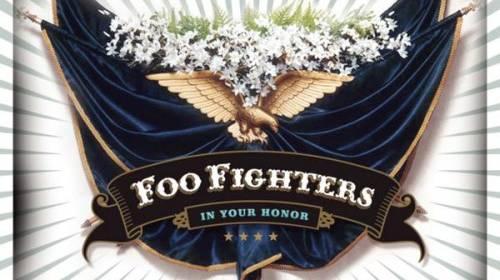Session Information
Preparation for the fifth Foo Fighters studio album began in late 2003, immediately following the conclusion of touring for the previous album, ‘One By One’. After almost 18 months on the road, Dave Grohl had several new songs written and headed home to Studio 606 to commit them to tape. Whilst their studio ‘base’ was still in Virginia most of the band members were now living on the West coast, thousands of miles away. This made arranging long-term recording projects an issue, with band members not wanting to be away from their family for extended periods of time. Another issue was with Studio 606 itself.
Whilst the band enjoyed the privacy and laid back nature of recording in Grohl’s home basement the space was not particularly large, and had certain challenges and issues that came with having a recording studio in the basement of your house - “we'd have to stop doing vocals sometimes, because you could hear the crows outside through the microphones,” said Grohl of one of those issues. “Or I'd have a couple of beers, go to bed, and then at two o'clock in the afternoon, I'd hear a kick drum coming through the heating vent. I mean - it's my fucking house”. It was, therefore, decided the band needed a new private studio on the west coast with the greater Los Angeles area making the most sense.
So dawned a huge project for Dave and the entire Foo Fighters organization – relocate Studio 606 two and a half thousand miles across the country. Of course, it would not be literal, nor that simple. “My original intent was to create something really low-key like my basement studio in Virginia where we made the last two records,” said Grohl. “It was homemade, low-budget and low-tech, but a lot of good shit came out of there. I thought that was our vibe.”
His ambitions soon grew, and a much grander idea was soon devised with plans to buy a large, empty warehouse type building and within it create a huge space for the band. It would serve both a recording studio and a storage space for their ever-growing collection of guitars, drums, and other equipment. “We wanted a nice big control room where people could smoke if they wanted to and it wouldn't drive everybody else out,” said Nick Raskulinecz of one aspect to the plans. “Then it just made sense, since Dave had tons of gear scattered around the country, to build a place big enough to store it all.” As well as being physically large, Grohl also had similarly ambitious plans for what they would eventually record there - “Let's buy an 8,000-square-foot warehouse, build the nicest studio in L.A. and make a double album in six months” said Grohl of the ambitious proposal.
Like the original low-key plans for the studio Grohl's vision for the first recording there wasn't initially quite so grand. His first consideration was a venture back into the world of movie scores, following his first attempt with the 'Touch' soundtrack in 1997. “After we finished touring for the last record I thought, Okay, I'm in my mid- to late-thirties now. Do I really want to run around festival stages screaming my head off every night?” he thought to himself. “So I thought that, rather than just jump back into the album cycle, I'd see if I could find a movie that needs a score.” Grohl started writing some appropriate music but then had a light bulb moment. “After about a month of writing I thought, wait a second, this could be a killer Foo Fighters record. I'd hate to have pulled a solo album out of my ass in the middle of the best time of our lives as a band, so instead, it became a Foo Fighters project.”
As well as the softer, score like music Grohl also re-considered that thought on dashing around on stages playing the big rock hits – It was a definite yes. “I wrote 14 or 15 [acoustic] songs, but then it occurred to me that there's something about drinking half a bottle of Crown Royal and jumping up on stage at Reading Festival. So I decided I should probably write some rock songs too.”
Before the new studio could be built and with Studio 606 in Virginia being stripped out friend and producer of the previous album Nick Raskulinecz helped Dave to kit out his new Los Angeles home with a basic digital recording suite, so he could continue working on his demos. “I put a drum setup and a Pro Tools demo situation in Dave's garage,” said Raskulinecz. “Then I gave him Pro Tools lessons. He ended up doing everything himself. He writes the songs on acoustic guitar, then plays all the instruments, working really fast. For demos, he'll lay down drum tracks and record a complete song - with vocals - in about an hour”.
With a huge number of songs recorded, both acoustic and rock, Grohl then had to decide what he was going to do with all the material, striking a plan just as ambitious as the blueprints for the new studio. “At one point I was demo-ing this stuff at my house, writing riffs and little pieces of songs, and I downloaded it onto a hard drive and [realized] it was five hours of music. We’ve got to make a double album!” he declared. “We've been a band for 10 years now, this is our fifth record, and I thought it would be boring to just keep making album after album and making videos and playing festivals, so I wanted to do something special.”
The master plan was now complete and step one was to find a suitable location for the new studio.
The band scouted the wider California area and in Spring 2004 happened upon a large building in Northridge, a small district in northwest Los Angeles most well-known for being the home to many of the major pornographic studios. The plot earmarked by Grohl was thankfully a good distance from those studios however, in a small residential area. The location, according to Grohl, was previously occupied by a large home owned by a woman whose stalker “turned up one night and burned the place to the ground”. Since then, the basic shell of a building had been built on the land with structural walls and foundations in place but little else. Unperturbed by the checkered history of the location, Grohl decided it was the perfect blank canvas for his grand plans and made the purchase in April 2004.
Preparations for the album recording and construction of the studio started concurrently. As plans and blueprints were drawn up for the studio in July, the band booked into Mates Rehearsal Studio to start working on Dave’s new songs as a band for the first time. The studio, located in North Hollywood, was a favorite of the band that they had used many times previously, including in 1999 when auditioning new guitarists. New songs were worked through including ‘In Your Honor’, ‘No Way Back’ and a song given the working title ‘Flagger’. The latter was, in fact, the first time the band worked on the song which would later be known as ‘White Limo’. The working title was a reference to their belief it resembled a song by Black Flag. Speaking of the material they worked on during these rehearsals Raskulinecz stated that they ended up with three or four versions of around 30 songs and that “In hindsight, we might have gone a little too far.”
One reason for the lengthy time at Mates was due in part to waiting for the new studio. “Finally, it got to the point where I didn't want them to play the rock songs anymore. I was afraid they were going to get stale,” said the producer.
As the band was rehearsing construction was underway across the city, working to turn the empty shell into a working studio and Foo Fighters base camp. In late July members of the crew traveled back to Virginia and began the process of loading all the equipment onto trucks, ready for a long drive across the country. Upon arrival, much of the gear was temporarily crammed into Dave Grohl’s house, stored safely until it could be moved into its new permanent home.
Rehearsals and pre-production work continued throughout August and September and the band was becoming increasingly restless, wanting to get into the new studio and begin recording properly. Unfortunately, despite all the best efforts of the contractors, work was still far from finished and in mid-September the band decided the best course of action was to head to the building site and start helping out themselves, taking members of the crew with them. “Hammering, stuffing insulation — [we were] doing whatever [we could] to speed the process,” said Raskulinecz of their desperation.
Finally, by November, it was decided that the studio was in a suitable state for recording to commence, albeit still far from finished. The walls of the studio were still just insulation, very little acoustic soundproofing was in place and the control room was similarly unfinished. Despite this gear was moved in and recording began for the first time that month. With lots of construction work left to do a shift system was implemented, the band using the studio from 1 pm to 1 am each day and construction continued outside of those hours, mostly in the small hours of the night.
The band entered the studio with “five and a half hours of music” according to Grohl. “Writing ahead of time has an added benefit. We usually write during the recording sessions. Sometimes you walk into the studio and you throw down an idea that's spontaneous and new and fresh and exciting. But then you wind up a year later playing it live and you've elaborated on it, you've made it better,” he said in explaining the different approach from the past. “So, we've done that already in the six months we've had to work on these songs before recording them.”
It was decided that Foo Fighters would tackle the rock songs first, setting a rough goal of Christmas for completion before they would move onto the acoustic material. The process for recording was one the band were now most familiar with, beginning with drummer Taylor Hawkins laying down his tracks based off the pre-production demos. Guitars would follow next saving bass guitar for last, a decision producer Raskulinecz would explain - “Bass is so important. By doing it last, you can really tailor it for tuning, parts, and sound. The traditional way is to do drums, then bass; you get this massive bass sound — the greatest thing you've ever heard. But then you put the guitars on, and they're small because the kick drum and bass guitar are taking up all the space. So, you pile on 25 guitar tracks. Whereas if you do the drums and then the guitars, you can fill the hole that's left with bass. And sometimes that hole wants a certain frequency that isn't traditional for bass, but you have to go with it, which is even more fun.”
For Nate Mendel, this meant a long wait until he could get to work. Once the drums and guitar were complete, he would take home a digital ProTools file and work on his part. “I would run it by Dave and the producer, we’d talk about it, make changes, and then put it down” explained the bassist. “I would usually come in with this elaborate bass line—but over time, I’ve come to appreciate simplicity and what it can do for a song,” he added.
When it came to recording drums for the rock material Taylor Hawkins was in charge, guided by Grohl. “Dave lets Taylor own the tunes,” said Raskulinecz. “Sure, Dave could play all the drum parts if he wanted to, and he certainly has specific ideas about how they should sound and how parts should be played, but he trusts Taylor to do his thing. There was never one song where Dave said, 'Let me redo that, Taylor' or 'I don't think you got it, let me do it instead.' He really respects Taylor.”
Although there was clear chemistry between the Hawkins and Grohl the process of recording the drums was “really labor intensive” according to Mendel, with both pushing for perfection which sometimes led to frustration for the bassist. “Sometimes they record a whole song and then decide that it’s a beat-per-minute too fast or too slow, and we’ll re-record the whole thing based on that. Or, they’ll slightly change the kick drum pattern and that may or may not dictate having to redo all the music.” This kept Mendel on his toes, sometimes only needing to alter his bass lines in a small way but for some songs, starting from scratch was the only option.
For Hawkins recording of this album marked the first time he had a drum tech working with him in the studio. Gary Gershunoff (Known as Gersh within the band), a veteran session drummer based in LA had previously worked with Dave Grohl during the recording of Queens Of The Stone Age album ‘Songs For The Deaf’ and was brought in to help out Hawkins. “He understands how to tune drums and make them sound good. It's a real art and meant that all I had to worry about was playing,” said Hawkins of the assistance he offered. “I'm the first to admit that I am more comfortable on stage than I am in the studio, but I felt like I had a great support system around me this time. I'm sure I will become more comfortable with each record that we do, but when I'm in the tracking room and all eyes are on me, I'm just desperate to get it right! Drums are tough because they are the first thing to be recorded and they are the foundation of the song. We used a click on most of the tracks on the new record,” he added.
A wide range of drum kits and accessories were used during recording and the kits were also moved around the work-in-progress studio, experimenting to find different sounds. “Gear-wise, we have used a real mixture of stuff,” explained Hawkins. “Gersh got a conglomeration of mine and Dave's Zildjian and Tama stuff; and some vintage drums, and we would mix and match for different songs. Sound-wise, we have experimented more on this record than ever before, and we have tried to make every song different.” One constant was a 22-inch black Slingerland kick drum, the same one used during the recording of previous album 'One By One'. A Sennheiser 602 microphone was placed inside with a Soundelux 251 outside.
Breaking down the different songs recorded for the rock album, Hawkins described the drum rolls on the track ‘In Your Honor’ as “Very Who-esque”, referring to English mod rockers The Who. ‘No Way Back’, the first song the band tracked featured a “big, wide open sound” with “bouncy, upbeat tempo”. The song ‘DOA’ had two very different takes according to the drummer, with the first version having a “lo-fi, indie rock sound.” A little unhappy with the results and with a desire to make the song a little bigger another version was recorded which had a “much harder, rock feel” according to Hawkins.
Not every drum take was recorded to a click track. For the song ‘Hell’ it was preferred for the tempo to fluctuate throughout the short song - “It starts off in one tempo and moves up – perfect for someone like me who tends to speed up!” joked Hawkins. ‘Free Me’ and ‘The Deepest Blues Are Black’ were two songs Hawkins was very proud of, describing the former as “the proggiest [Progressive Rock] out of all the songs” and explained there was a “nice grace note on the snare” in the latter - a term describing an extra note specifically added outside of the melody of the song. Both tracks were recorded in the slightly unusual 6/8 timing with ‘Free Me’ transitioning to 3/4 time towards the end of the song. A lot of time was spent on the track ‘Resolve’ with three or four distinctly different versions recorded. “we wanted to get the best out of it, but we maybe started over thinking it a little bit,” explained Hawkins, noting that they ended up reverting back to the second version recorded as the following takes had started to sound like “A fucking Bon Jovi song!”
Hawkins described ‘The Last Song’ as being “what Breakout should have sounded like,” adding that “A lot of things on this record to me are what a lot of old past songs should have sounded like. With this record we worked on everything without beating the hell out of it; just getting the best, most intense, energetic performances.”
Another song attempted for the rock side of the record was an early version of the track ‘You Can’t Fix This’, although at this stage the song had entirely different lyrics and working title. Grohl had written the song for Foo Fighters and a fully fleshed out recording of the song was finished during this session but the band elected against using it because they believed the music “sounded too much like Fleetwood Mac”. The song would re-surface eight years later in 2013 when Grohl recorded a new version with Fleetwood Mac’s Stevie Nicks for the Sound City soundtrack, deciding it would be perfect for the Mac band member.
By early December the studio had reached almost full functionality although “by no means [were] we done” according to guitar tech Joe Beebe. “The big room sounds great, but the small room has some standing waves in it that are making it sound funny. Our control room is so fucking awesome it's unbelievable.” he continued. The control room had been modeled on Polar Studios, a studio in Sweden made famous by ABBA as well and Led Zeppelin, the latter recording their album 'In Through The Out Door' there.
At this stage much of the structural work was complete with painting well underway, carpets being laid in the office, tiling being laid in the upstairs lounge and kitchen cabinets due to arrive for fitting in the new year. The band soon started covering the freshly painted walls with various items of memorabilia including gold and platinum records awarded to both Nirvana and Foo Fighters as well as Zeppelin Gold records and various other items from the band’s personal collections. As the year ended recording for the rock record was close to completion, just a few guitar overdubs and vocal tracks were left to record before they would move onto the acoustic material.
The equipment installed in the studio was a mixture of analog and digital, the centerpiece being a classic Neve 8058 recording console hooked up to a Neve BCM10, a 10-channel analog mixing console. Also installed was the 32-input mixing desk shipped from the old studio in Virginia. The band operated in a somewhat unorthodox manner, recording the basic tracks on analog 2-inch tape which were then bounced over to a digital Pro Tools setup for overdubs and editing. One reason for this half and half approach was a shortage of analog tape at the time, not having enough to record and store everything recorded. Sixteen reels of 24-track Quantegy GP9 tape were ordered which they intended to continually re-use during recording but they hit a rather large snag mid-way through recording. Quantegy went out of business leaving them short of tape in a world which was by now digital dominated. “When we got the e-mail about them shutting their doors, we started frantically calling around all the guitar centers in the area, but they were all out because Rick Rubin bought it all. It's like insider trading or something,” Grohl said jokingly of the situation. Thankfully a new supplier was eventually located and recording to analog could go ahead as planned.
Recording of the acoustic material began at the end of January 2005 although there were some reservations as things got underway. “We were in a panic when we recorded the acoustic record. We'd spent about two months on the rock disc, and then one day I thought, Okay, I know when our deadline is, and if we don't start on the acoustic album we might be fucked,” explained Grohl. “Having never done anything like that before, I didn't know how long it was going to take. So, we had a little meeting where I sat everyone down and said, 'Here's what we have to do: Everyone has to be here all day, we need to do one song a day and no one's leaving until that song is done.”
The band worked to a simple schedule which involved Grohl starting most songs off on his own with an acoustic guitar. Working from a simple click track in his headphones, the bandleader would quickly find a tempo and “just roll an arrangement” in an off the cuff manner. The rest of the band would then add their parts whilst Grohl went off to write the lyrics. The regime was tough, but the band “pulled it off” according to Grohl.
Owing to the different requirements for recording the acoustic material several changes were made with regards to the equipment. To capture the acoustic guitars on most songs a Soundelux 251 microphone was positioned near the sound hole of the guitar with an RCA 77 on the neck itself, near to the 12th fret. A couple of songs required a different approach however, with the RCA microphone moved over Grohl’s shoulder and a Coles mic placed high in the room. For the track ‘Friend Of A Friend’ even more microphones were utilized with a pair of Royers on each side of the guitar and a further pair of Earthworks mics farther out, but all pointing towards the same sound hole.
The Soundelux 251 was also used to capture the Mellotron, Piano and all of Grohl’s vocals. “We used it into a Martek preamp and a DBX 160XT compressor,” said producer Raskulinecz, noting that the combination was “kind of funny” – the microphone and pre-amp cost in the region of seven thousand dollars whilst the compressor could be acquired for just two hundred.
When it came to guitars for the acoustic tracks a wide variety was utilized including an old Silvertone that had been laying around in Raskulinecz’s van for several years, Grohl describing it as looking like “A fucking Cello!” A rather more expensive range of Gibson guitars was also used for various songs such as the Country Western and Dove models. Another guitar of note was a Martin acoustic from the seventies which Grohl had bought in London.
Owing to a large number of microphones pointing at his guitar every little sound would be captured, including potentially unwanted noises. On the track ‘Over And Out’ the sound of Grohl’s fingers scraping against the strings could be heard, an early worry in the recording. Different ideas were concocted to stifle the noise, including rubbing a stick of butter along the neck, but the rest of the band convinced him that it sounded natural, as a recording of someone sitting in front of a microphone playing the guitar should sound.
For drummer Hawkins, his contributions to the acoustic tracks were done very quickly, most completed within 20 minutes. On the track ‘Miracle’ he and technician Gersh utilized a technique formerly used by The Beatles drummer Ringo Starr, putting T-shirts on the drum skins to get a sound they described as “dead, dry and dirty”. The song also featured only a floor tom and snare drum.
The first acoustic track recorded was 'Still', a song with a very dark meaning but one that Dave liked. “When we listened back to it, I remember saying, 'That's my favorite thing we've ever recorded'. It's beautiful, and it was so new to me.” The lyrics of the song describe a child who sat on train tracks in Grohl’s hometown of Virginia when he was a youngster, committing suicide. Grohl and his friends rode their bikes to the scene and “saw pieces of his bones”, among other gruesome sights. “It's heavy man, but you know, I was listening to the music, and that's what it was,” he explained in the choice of lyrics.
Whilst the rock disc had been 100% Foo Fighters the band decided that the acoustic disc would be an opportunity to invite some guest musicians to contribute. “Ah, my famous friends!” quipped Grohl in an interview. “Yeah, we had a long list of people that we wanted to ask. I thought it'd be fun to have guests because we'd never done it before.” Names that Grohl had shortlisted included Jim James of My Morning Jacket, multi-instrumentalist Ry Cooder, Greg Norton of Hüsker Dü, John Paul Jones of Led Zeppelin and Norah Jones.
One other important name on the list was Rami Jaffee of The Wallflowers who became a large contributor to proceedings, recording keyboards for five different songs. “It was almost a learning experience for him, seeing what in the keyboard world will work for him,” Jaffee said of the experience being teacher to Grohl. “He’s pretty focused on what he wants in his songs, and this was a weird area for him. When I first got to the studio, he wasn’t sure how it was going to sound with his songs.” Instructed to just experiment with ideas, Jaffee soon learned of what was going to work and what wouldn’t.
“He doesn’t like pretentious ideas and sounds. I had a few wacky keyboards, some pump organs, and accordion organs and when I got to the more eclectic stuff, he was kind of weary, he didn’t want too much of that,” explained Jaffee.
John Paul Jones of Led Zeppelin fame agreed to participate and was the first big name to arrive at the studio on February 11th. “That guy is like royalty, but he was so down to earth and cool it was incredible” guitarist Chris Shiflett enthused in a post to the band's official message board the following day. “Of course, we managed to sneak in a few Zeppelin trivia questions and he even riffed Kashmir [Led Zeppelin track] on the mellotron for a minute. we are pretty fucking blessed,” he added. Grohl, a huge Led Zeppelin fan was also very excited for his arrival. “He walked in with his mandolin like a minstrel, [and] immediately went into 'The Rain Song.' I was worried, [because] I have all these pictures on the wall down there of Jimmy Page and John Bonham”.
Foo Fighters Bassist Nate Mendel initially had reservations upon hearing about the guest slot, wondering if he would be surplus to requirements on the record. “Okay, how many songs are not going to have my bass on them?” he nervously asked Grohl. As it turned out Jones only featured on three tracks and none of them involved a bass guitar. He first recorded piano on the track 'Miracle' and then used a Mellotron on two songs, 'Another Round' and 'Oh Yeah'. “He's an arranger, a composer. He came in, listened to the song, put it on piano, played it a few times and it was done” said Grohl of his work on ‘Miracle’. Whilst two of the tracks made it to the final album the other, ‘Oh Yeah’, did not.
The song had first been worked on back in 1999 for the band's third studio album ‘There Is Nothing Left To Lose’ but never finished. This new version featured Jones on the mellotron and Grohl on drums but it was decided the song just “didn’t fit” the album but Grohl was still happy, seeing the song as “the closest I will ever get to playing in Led Zeppelin,” a fact which was true at the time but would not be the case a few years later.
On Valentine's day 2005, February 14th, the second-high profile guest arrived at the studio, Norah Jones. When Jones got the call from Grohl requesting her to feature on the next Foo Fighters record she was hoping it would be a chance for her to stray from her usual genre and style. “I was like, ‘Cool, I get to rock'“. Unfortunately for Norah, that dream was soon shattered when Dave told her the band was recording a rock disc and an acoustic disc. “Let me guess which one you want me on,” Jones joked.
The song Grohl had earmarked for her vocals was ‘Virginia Moon’, another old composition the band had also first worked on during recording for their third album. “It never made sense on any of the records we'd made previously because it's hard to put an acoustic song in the middle of a rock record,” Grohl said of the track’s history. “So, I thought, 'Now that we're doing this acoustic record, maybe it can see the light of day’”.
Whilst the song itself was old the lyrics were very new, something Jones was surprised by - “When I got to the studio, Dave was like, ‘I just wrote the lyrics this morning,’ and it was good. [I said] ‘Wow. I can’t really work like that myself, but I’m surprised you did this so quickly!” Grohl had selected Jones specifically to feature on this song after listening to one of her records before recording, thinking to himself “This is her vibe, she does jazz.”
Believing her smooth, warm voice would harmonize well with his own the pair spent just three hours recording the vocal takes, Grohl impressed by her natural abilities - “She was playing dog-ear stuff, where you cock your head in disbelief,” he said. “It was perfect on the first take.”
Norah Jones was not the only guest musician to feature on ‘Virginia Moon’. Grohl envisioned the song having a jazzy, Bossa nova guitar lead to match the vocals but nobody in the band knew how to play jazz leads. In stepped guitar tech Joe Beebe who did have the necessary skills, a talented guitar player himself. 'This thing needs a lead and nobody in our band knows how to play jazz leads. Will you please do it?” Dave had asked him. A slightly nervous Beebe asked for a copy of the track and said he would take it home and “write the baddest lead you've ever heard!” but Grohl had other plans. “No. You know what, dude? We're gonna go upstairs and have some dinner, and we'll cut it when we come back down.”
Beebe sat down at the Pro Tools rig, ran the track in a loop and wrote the guitar lead in less than an hour. Writing on his website he believed the track had turned out well but that it had “definitely put [him] on the spot”. The band continued to work on the song but were forced to backtrack at one point as it headed in an unintended direction – “We put an organ on the song, and it turned into something that you'd hear in an elevator. We had to tread lightly around some of these songs. That one, in particular, could have gone south real quick,” Grohl said of the misdirection. Even with the organ removed he still had reservations about including the song on the album, believing it may have been just “too fucking weird” for a Foo Fighters record.
In the end, Nate Mendel was the man to convince him – “That's exactly why we should put it on the record” he quipped. Drummer Hawkins was also happy with the song’s inclusion, arguing that it wasn’t just included because it featured Norah Jones but that simply “It works”.
Another old composition revisited for the acoustic disc was 'Friend Of A Friend', a song Dave had written back in 1990 shortly after joining Nirvana and moving into an apartment with Kurt Cobain. The track was first released on the 'Late! - Pocketwatch' album in 1992 and Grohl had performed the song a handful of times live since, most notably for a BBC Evening Session in 1997. Despite that, it had never been released under the Foo Fighters name and so it was decided this double album was the perfect opportunity to do so. This new recording again featured only Grohl on acoustic guitar and vocals, just as the original, but with much higher production quality. As had been the case with 'Virginia Moon' Grohl had concerns about including the song given its history and subject matter but decided to go for it. “I thought 'Goddamnit, I don't know if I want to field a load of crap about that song for a year and a half', but it's a great song'.”
Another song recorded during the acoustic sessions to partially come from Grohl's “work-in-progress” bin was 'Over And Out'. He’d first written and demoed the song around five years earlier in his Virginia basement but hadn’t done anything with it since, describing it as “an experiment in doing something more mellow.” Like ‘Virginia Moon’ and ‘Friend Of A Friend’, Grohl now saw this as the perfect opportunity to finally release the song with the full band this time featuring on the song.
January 17th, 2005 saw Dave Grohl joining other musicians including Eddie Vedder, Josh Homme and Tenacious D at the Wiltern Theatre in LA for a benefit concert, supporting victims of the Earthquake and resulting Tsunami that occurred in the Indian Ocean on December 26th, 2004. During Grohl’s set, he gave a debut to a brand-new song entitled ‘Razor’, telling the crowd he’d written the track that same day. “I sat up all night trying to write this song, and it didn't work. I woke up early and started writing lyrics and got it right as the car was coming to pick me up. I was up in the dressing room practicing it and Josh and I were sharing a room. I said, 'There's a second guitar harmony in this song, try it out.' The pair played the song during the show and after getting a positive reception from the crowd Grohl also invited Homme to visit the studio to perform on the album version of the song.
Homme’s sense of timing threw Grohl off somewhat when he decided to take him up on the offer. “Josh called me at like, one in the morning, going, 'Hey – I wanna come down and play that song'. So, I was like, 'Uh, okay'. And then, of course, we're here until six before finally, I was like, 'Okay, you're a genius – let's go home'. I mean, I have so much respect for that guy – he's a dear friend and an inspiration, really. He fucking rules”, said Grohl of the inconvenient but fun guest recording.
In what was turning out to be a record of many firsts another would come with the track ‘Cold Day In The Sun’. Whilst both Taylor Hawkins and Chris Shiflett had in the past sang lead vocals for the band, they were neither tracks on an album nor Foo Fighters originals.
The drummer had written the song a few years previous in a “rough sketch form” and showed it to Dave, something he’d always been apprehensive about doing - “It's hard playing a demo for Dave because he's like my older brother – I know when he thinks something sucks.” Fortunately for Hawkins, the man he looked up to did enjoy the song and was keen to work on it with Foo Fighters.
The band initially attempted to record it as a heavier track for the rock side of the album but ultimately decided it made more sense for the acoustic disc, one of the very few songs that would be attempted in both styles. As Hawkins was set to perform lead vocals on the track it was decided that Grohl would then get behind the drum kit, the pair exchanging playful banter during recording. As Dave was recording a drum take Taylor would be listening from the control room and head out into the live room when he wanted to suggest a change. “No, I like what I’m doing” Grohl playfully quipped. A tambourine featured through many of the songs on the acoustic disc which was played by Grohl, not Hawkins, as he hated playing it. He did, however, make an exception for ‘Cold Day In The Sun’.
Due to the speed at which the band was required to record all the acoustic tracks bassist Mendel also had to work faster in constructing his parts of the song. “We were running low on time and I didn’t have a chance to go and write bass lines, so they ended up being much simpler,” he explained. For some of the tracks, Mendel would not even have an opportunity to hear the song before going to record his bass. “Dave and Chris would put down their guitar lines and I’d be in a room with the bass, and Nick Raskulinecz would go, 'Okay, let’s run it a couple of times and see what happens'.”
In total fifteen acoustic songs were recorded, ten making it to the final album and five not, including the third song featuring John Paul Jones as well as ‘Fuck Around’, another older idea which was again not finished during this session.
As recording for the acoustic disc was nearing completion Grohl began having reservations about the rock songs recorded months earlier and decided they needed to go back and work on them further. “We listened to the rock stuff and realized the acoustic stuff was kicking its ass. We knew we needed to stay loose instead of always trying to perfect everything,” Taylor Hawkins recalled of the situation.
Almost all of the tracks first recorded in late 2004 were re-worked in some way, including some that the band had put on the shelf - one of those being the song ‘Best Of You’. “I'd kind of forgotten about it,” said Grohl. “[It] was one of the first songs we wrote for the album. It was inspired by seeing people stand up in the face of struggle. It’s meant to make you feel empowered. It's about the refusal to be taken advantage of by something that's bigger than you, or someone you're in love with. It's the fight in the face of adversity,” he said of the song's meaning. “I didn't really think of an interesting melody; I just wanted to scream the whole way through. And the first few times we rehearsed it, I thought, ‘There's no way I'll be able to play this live. There's blood in my throat’,” he added.
The song was forgotten until one day during the second rock album sessions Grohl's manager, John Silva, came into the studio and asked him “What happened to that Best of You song?”. The song was pulled out and worked on further, with the newer version deemed good enough to include on the record.
Another track recorded towards the end of the session was a bit of light-hearted fun for the band. Entitled 'That Ass', the rap style song featured such lyrics as “Ding dong, daddy's home, Time to get down and get this on.” Moving back to more serious material the band pressed on with further tweaking the rock recordings and by late February all the basic tracks were deemed complete. Between the two discs, the band had around forty songs, or song ideas, which were then whittled in half down to the best twenty. All that remained for the band were a few overdubs before mixing could finally commence although there was still one song the band was working on right to the very end of proceedings - ‘7 Corners’. “There's always that stray song from eight years ago, and it's usually the same one. It's a great riff but it's not a great song”, explained Grohl of the already long history of the track. “I've spent years trying to figure it out. I'm sure it'll come back out for the next album,” Grohl believed. For now, though, it was left on the cutting room floor once again.
Mixing of the record began on February 28th, 2005. The rock songs were treated very differently from the acoustic songs, each requiring a very different approach. The rock tracks were mixed by Nick Raskulinecz in stereo to half-inch analog, Pro Tools at 88.2khz and DAT. He monitored with Yamaha NS-10 and ProAc studio speakers but also utilized a small pair of Realistic branded speakers that he had owned since he was a child.
Elliot Scheiner was placed in charge of mixing the acoustic tracks which he did at Capitol Studios in Hollywood using a Neve VR console. As he was a fair distance away and the band was still busy in the studio, he began mixing the tracks that he had received via the internet.
Scheiner mixed one track and sent the result to Grohl and Raskulinecz to listen to. “We just looked at each other, then said to him, ‘Okay, which one do you want to do next?’,” quipped Raskulinecz, obviously happy with what they had heard. Scheiner mixed in stereo to half-inch analog and also mixed in surround sound with a Studer A827 2-inch 8-Track, using a surround matrix fitted to the Neve console. For monitoring, Scheiner also used Yamaha NS-10s for the stereo mix and Yamaha MSP-10s for the surround sound mixes.
A rather strange piece of equipment brought to the studio towards the end of mixing was an Acura TL Sedan car. The vehicle was equipped with an ELS 5.1 surround sound audio system which Scheiner helped develop and he’d deemed it the perfect way to properly monitor the 5.1 mixes.
The album was released in June 2005 featuring twenty songs, split evenly between the two styles. Several songs from the session would also see release as B-Sides to singles from the album including ‘FFL’ and ‘Spill’. A couple of covers the band recorded towards the end of the session were also released - ‘I’m In Love With A German Filmstar’ originally by The Passions and ‘Kiss The Bottle’ by Jawbreaker.
